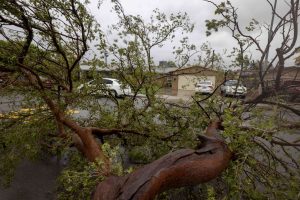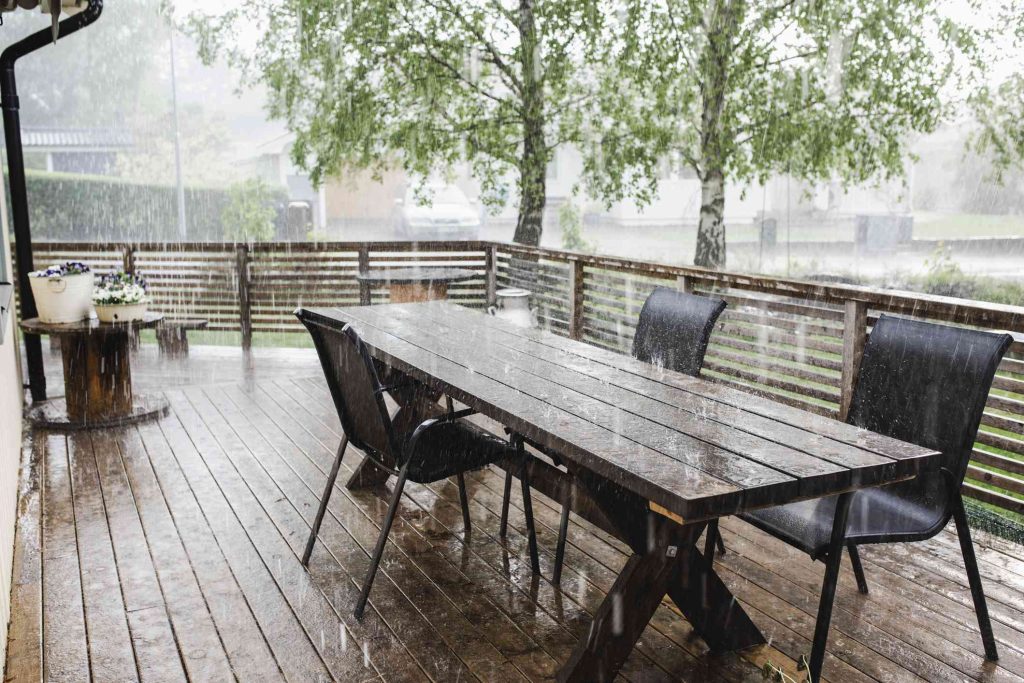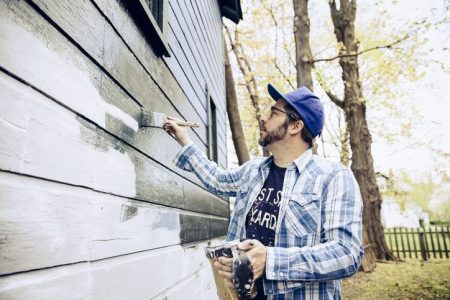The next time you receive the news that a storm or strong winds will likely soon hit your area, you won’t want to be scrambling and wondering what exactly you will need to do in order to prepare your outdoor space for impact. It’s much easier to stay calm by having a list of steps that you will need to take readily available to you ahead of time. That’s why we’re sharing the below five hacks that professionals use to prepare their outdoor spaces for severe wind and rain.
Taking these steps will ensure that your yard and home face as little damage as possible. You can safely curl up inside knowing that you have responsibly prepared for the worst like a total expert.
Here’s what you will need to do ahead of time when it comes to outdoor plants, trash cans, trees with loose branches, and more.
Meet the Expert
- Deborah Sauri is the co-owner of TriVistaUSA.
- Erin Stetzer is the founder of Erin Stetzer Homes.
- George Noble manages business development for Wilderworks.
Add Extra Mulch to Plants
Ensure that your outdoor potted plants remain safe and stable in the event of high winds by adding extra mulch to their pots, Deborah Sauri, the co-owner of TriVistaUSA, suggests. For even more strength, Sauri recommends using garden stakes to cover them and keep them secure.
“Group them in a sheltered area to minimize wind damage, and wrap them loosely in burlap or sheets for extra protection,” Erin Stetzer, the founder of Erin Stetzer Homes, adds.
She notes that if you can relocate your plants indoors, that is an even better strategy to keep them safe.
Want more home reno project tips and inspiration? Sign up for our free daily newsletter for the latest how-tos, reno guides, and more!
Check Your Trees
Prior to a storm, it’s important to ensure that the trees in your yard are appropriately pruned to lessen the chance of any branches falling on and subsequently damaging your home.
George Noble, who manages business development for Wilderworks, suggests checking for weak tree limbs and trimming shrubbery away from your house.
Secure Outdoor Furniture
By no means do you want your outdoor furniture to go flying across the yard—or toward your home—during a storm. However, you can work to ensure that it remains safely in place using a few simple materials.
“Secure outdoor furniture by stacking chairs and tying them down with bungee cords, or use lawn stakes to anchor them in place,” Sauri says.
Stetzer recommends making use of tie-down straps, bungee cords, or heavy-duty zip ties for larger pieces of furniture as well as grills.
Of course, Sauri adds, if you’re able to relocate your outdoor furniture to a safe space indoors, such as the garage or basement, that’s always an even more optimal solution.
Stetzer agrees and says to bring in all patio furniture, planters, umbrellas, toys, and decorations, if possible.
“They can become dangerous weapons in strong winds, so it’s best to have them inside a garage or shelter,” Stetzer says.
Don’t Forget About the Driveway
Once you’ve tackled your backyard, you’re not off the hook just yet. It’s time to turn your attention to the front of the home, and if your driveway contains a row of trashcans, you will want to ensure that those remain in place, too.
Stetzer recommends securing trash cans with bungee cords or tie-downs if you’re worried about them blowing over. Another method to make sure they stay in place is by weighing them down with sandbags or bricks.
Have a basketball hoop in the driveway? Lower it as much as you can, she suggests.
Evaluate Outdoor Structures
Stetzer stresses the importance of taking some time prior to a storm to evaluate the structures in your yard.
“Inspect awnings and canopies for loose screws, bolts, or weak spots, and secure them tightly or take them down if necessary,” she says.
As it pertains to sheds and garages, you will want to close and lock all of their doors and windows.
“Check for any loose panels or siding that could be ripped off by strong winds,” she says. “In high-risk areas, board up windows with plywood for extra protection.”
Read the full article here














